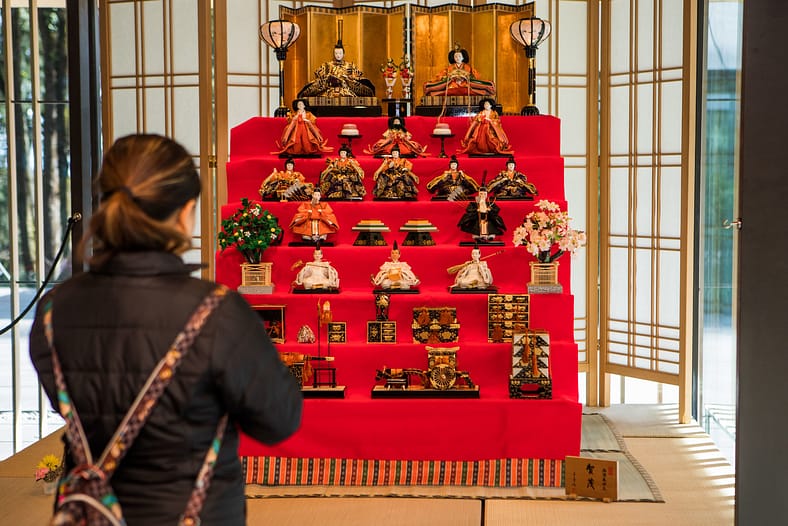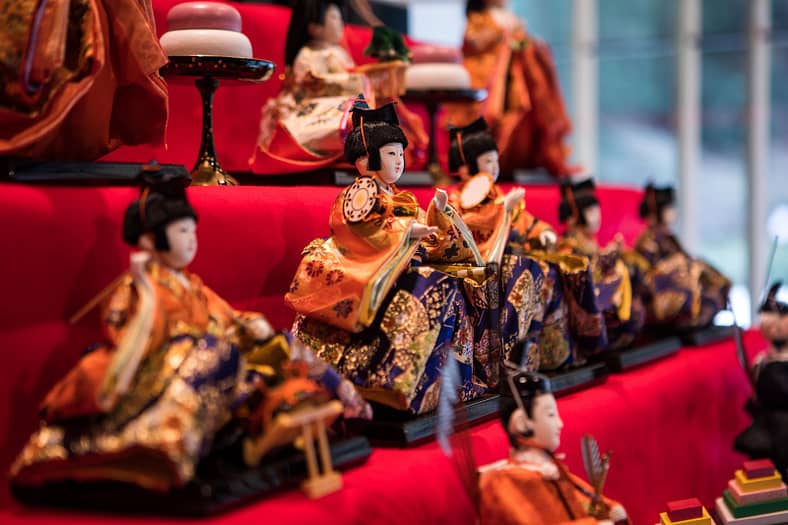
Out of an abundance of caution for the well-being of our visitors and staff, Portland Japanese Garden will forgo a public event of Hina Matsuri in light of recent COVID-19 developments. Instead, the Garden will celebrate this holiday by showcasing a collection of hina dolls in the Jordan Schnitzer Japanese Arts Learning Center from February 23 through March 7.
Hina Matsuri, also called Doll’s Day or Girl’s Day, is celebrated in March of every year in Japan to celebrate the happiness, growth, and good health of girls. This celebration is also known as Momo-no-Sekku, or Peach Festival. Hina Matsuri is said to have originated in the Heian period (794-1185), a time when people believed that dolls had the power to drive away evil spirits. Paper or straw hina dolls were set afloat on boats down the river and out to sea, sweeping away troubles and bad spirits. This tradition called nagashi bina still takes place in some regions in Japan.
The tradition of displaying hina dolls at home began during the Edo period (1603-1868) and still takes place today. Traditionally, parents or grandparents purchase a set of hina dolls following the birth of a girl. In some instances, hina dolls are passed down from previous generations.

Hina dolls are displayed on a tiered platform (hina dan) covered with a red carpet (dankake). The top tier holds the two imperial dolls. The Emperor doll holds a ritual baton and the Empress a fan. The following tiers hold their attendants: the second tier holds three court ladies (san-nin kanjo). Each lady holds ceremonial sake equipment. The third tier holds five court musicians (gonin bayashi) each holding a musical instrument except the singer who holds a fan. The fourth tier holds two ministers (udaijin and sadaijin), the one on the right (Minister of the Left) being older and higher ranking. The three court attendees (sannin jogo) on the fifth tier each show angry, merry, and sad faces.